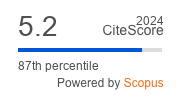Article | Open Access
No Strong Leaders Needed? AfD Party Organisation Between Collective Leadership, Internal Democracy, and “Movement-Party” Strategy
| Views: | 8167 | | | Downloads: | 4750 |
Abstract: This article analyses the formal and lived organisation of the Alternative für Deutschland (AfD, Alternative for Germany). We show that the party is exceptional among what is usually understood as the populist radical right (PRR) party family, at least from an organisational perspective: The AfD sharply contradicts the “standard model” of PRR party organisation, which emphasises “charismatic” leadership and the centralisation of power as key features. Instead, studying the AfD’s efforts to adopt some elements of a mass-party organisation and its relatively decentralised decision-making underlines the importance of “movement-party” strategy, collective leadership, and internal democracy—concepts that are usually associated with Green and left-wing parties. Our analysis shows how the party’s organisation is essential for understanding its development more broadly as it reflects and reinforces sharp intra-party conflict. From this perspective, the case of the AfD sheds new light on the relationship between PRR party organisation and electoral success, indicating the importance of strong ties to parts of society over effective internal management as long as demand for anti-immigration parties is high. We conclude that even though AfD quickly built up a relatively inclusive organisational structure, the role of both its leadership and its rank-and-file is still a matter of controversy.
Keywords: AfD; intra-party democracy; leadership; movement-party; party organisation; populism; radical right
Published:
© Anna-Sophie Heinze, Manès Weisskircher. This is an open access article distributed under the terms of the Creative Commons Attribution 4.0 license (http://creativecommons.org/licenses/by/4.0), which permits any use, distribution, and reproduction of the work without further permission provided the original author(s) and source are credited.


